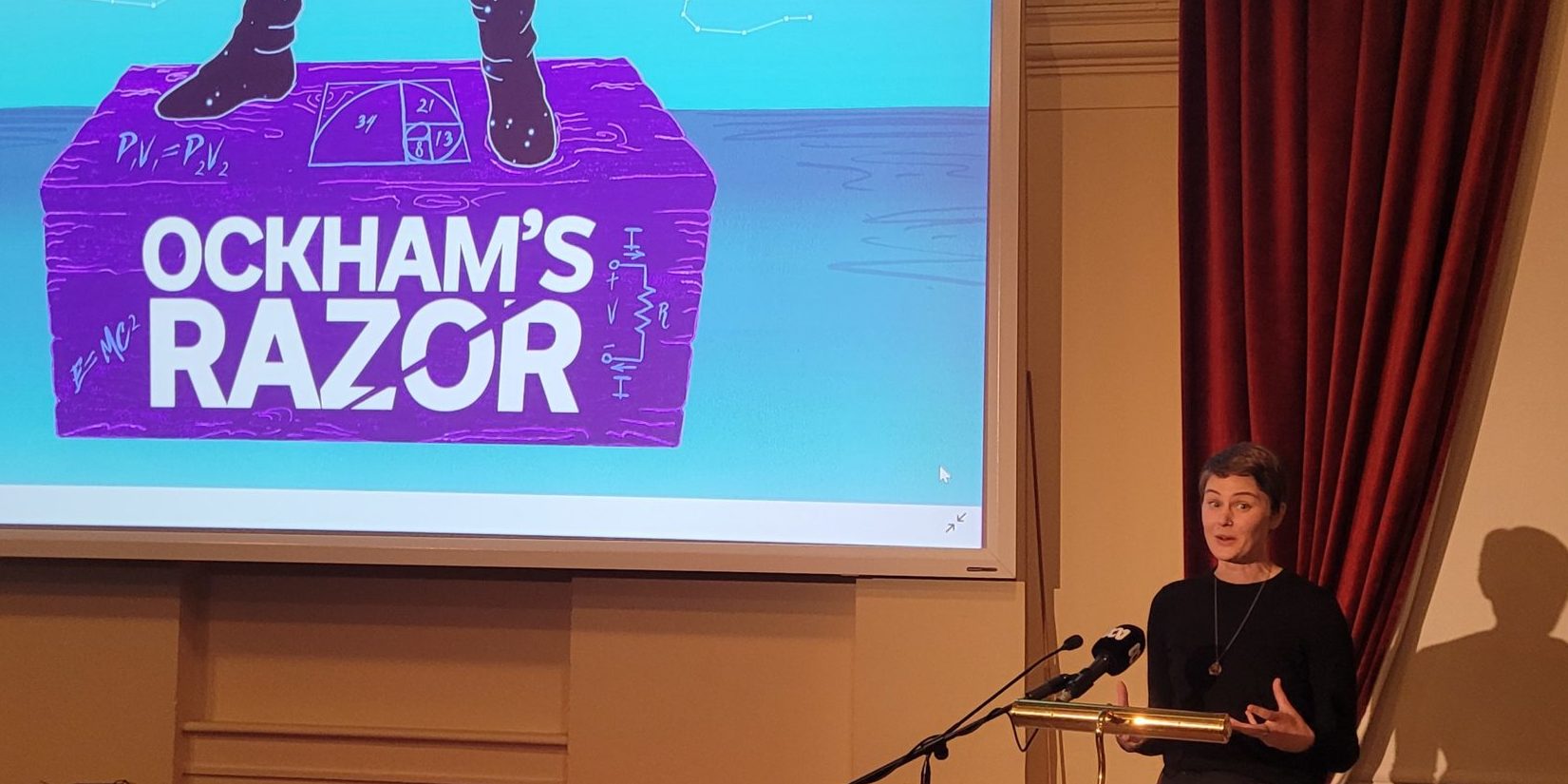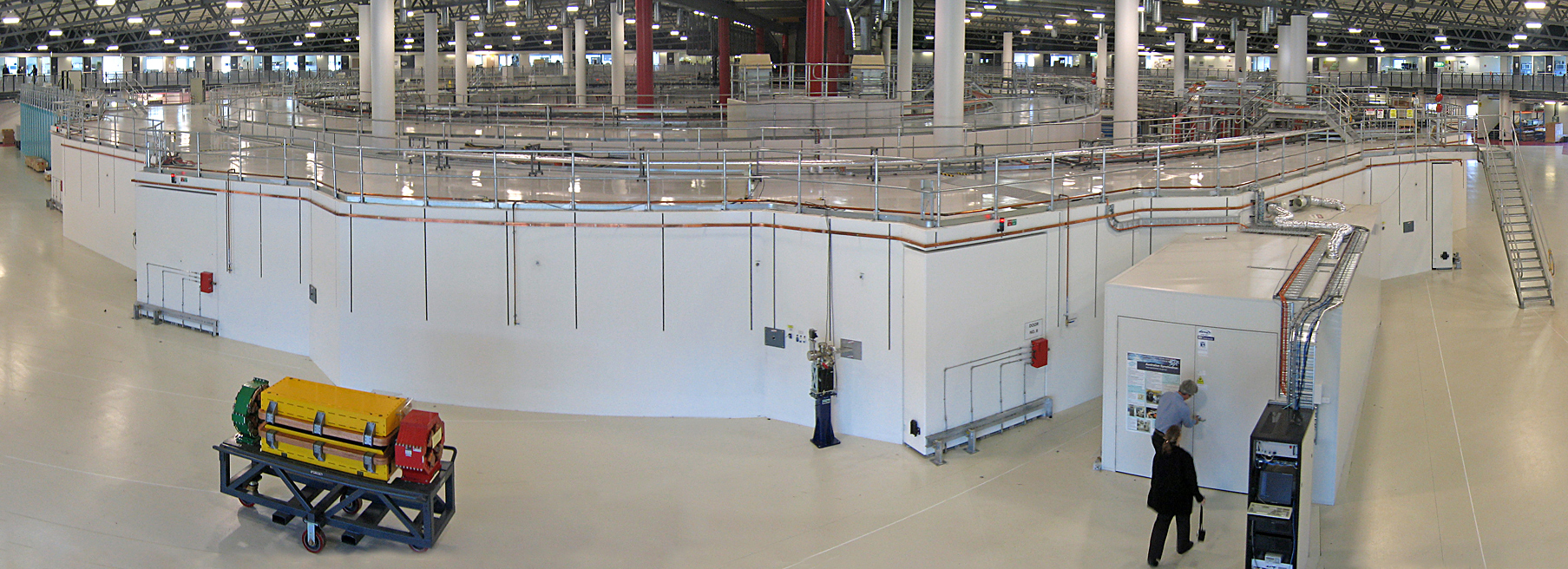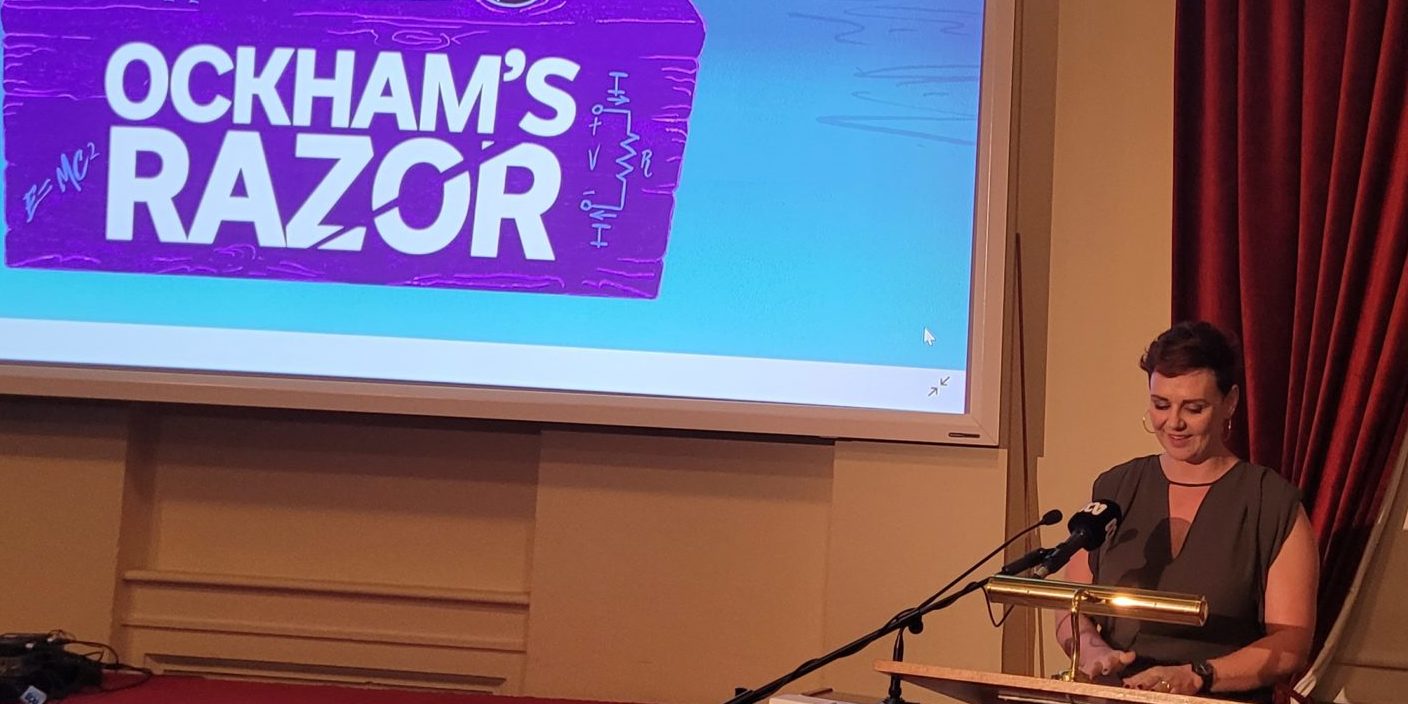The Science Doughnut
by Catriona Nguyen Robertson
RSV Science Communication Officer
The world still has not yet ended. It did not end in 2008 when the world’s largest and most powerful particle accelerator was switched on in Geneva. Sensationalist new reports speculated that the Large Hadron Collider would create a black hole that would swallow surrounding matter faster and faster until it devoured the entire planet.

Dr Emily Finch (ANSTO) works at a similar particle accelerator here in Melbourne: the Australian Synchrotron. But given that you are reading this, these immensely powerful machines have clearly not brought about doomsday.
Particle accelerators like the Large Hadron Collider and the Australian Synchrotron propel charged particles at high speeds and channel them into a beam. They then smash them into targets or other particles zipping in the opposite direction. By studying these collisions, physicists can probe the world of the infinitely small. While the Large Hadron Collider uses positive protons, the Australian synchrotron smashes negative electrons together, both using the same principles.
Emily likens the synchrotron – or as it is affectionately known, the Science Doughnut – to a racetrack. F1 enthusiasts love to watch race cars whizzing around a track at 300 km/h, but the circular synchrotron, 216 m in circumference, has electrons zipping around a thousand times faster at just under the speed of light.
The particles travel as a beam inside a vacuum so that no air or dust can obstruct their path. At the Australian Synchrotron, electrons are shot out from an electron gun so that they are already travelling at over half the speed of light. They are then sped up further until they nearly reach the speed of light and are shot out into an inner “booster ring” to boost their energy. Once the electrons have gained enough energy, they are shot into an outer ring. Hence the affectionate nickname – the two rings form a doughnut.

Electrons travel in straight lines. But the Synchrotron is circular. To force electrons around corners, their path is bent with a series of magnets. As they bounce around corners, the electrons produce a beam of light known as synchrotron light. This light is one million times brighter than the Sun, and scientists like Emily measure how it interacts with different samples to determine their composition or atomic structure.
Particle accelerators like this have contributed immensely to basic science as well as many varied applications. They provide answers to fundamental questions about the universe and shed light on physical laws that govern matter, energy, space, and time. Accelerators are also used in interdisciplinary science that brings together many scientific fields such as biology, medicine, material science, physics and chemistry.
In 2020, the Australian Synchrotron was used to zoom in on the SARS-CoV-2 virus. The spikes that give the coronavirus its name – corona or crown – are proteins that the virus uses to enter our cells. They do so by interacting with receptors on our cells similar to a key opening a lock. By using the synchrotron to study this interaction, researchers could learn about how infection occurs and how to block it.
The Synchrotron was also used to reveal a hidden painting underneath the 19th century brushstrokes of Edgar Degas’ Portrait of a Woman. The synchrotron scanned the painting, firing an intense beam of charged particles into the canvas without damaging it. The beam excited individual metal atoms in the layers of paint, allowing scientists to determine the composition and colour of the picture that lies beneath.
The Australian Synchrotron is therefore one of Australia’s most significant pieces of infrastructure and a hub of innovation. More than 5000 researchers use it per year, and its powerful beams of light illuminate the molecular and atomic details of a wide range of materials.

Ockham’s Razor at the Royal Society of Victoria.
The simplest explanation is often the best. ABC Radio National’s Ockham’s Razor has returned to the Royal Society of Victoria. Seven incredible tales of science and endeavour were presented at the podcast and recorded for the podcast live. Hosted by Tegan Taylor and produced by James Bullen, Ockham’s Razor is a soap box for all things scientific.
Dr Emily Finch’s talk is now available online from https://www.abc.net.au/radionational/programs/ockhamsrazor/the-science-donut/13888856 .






